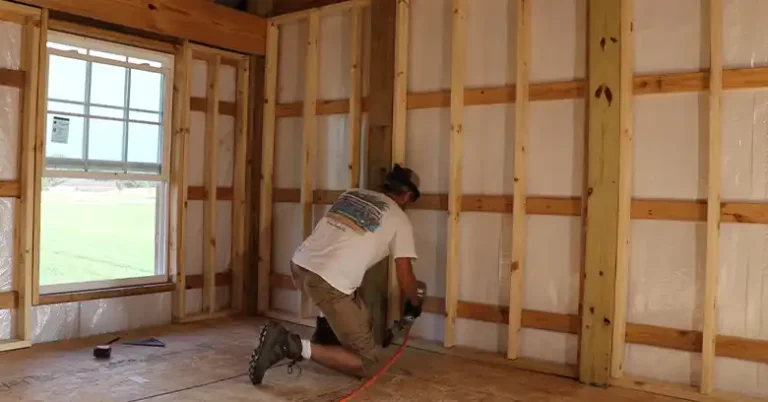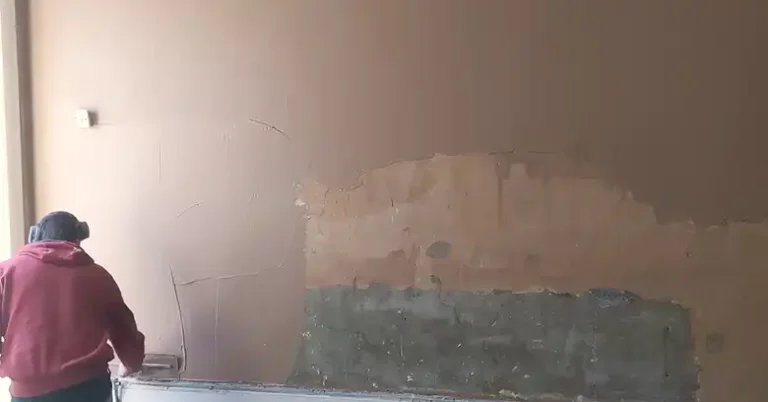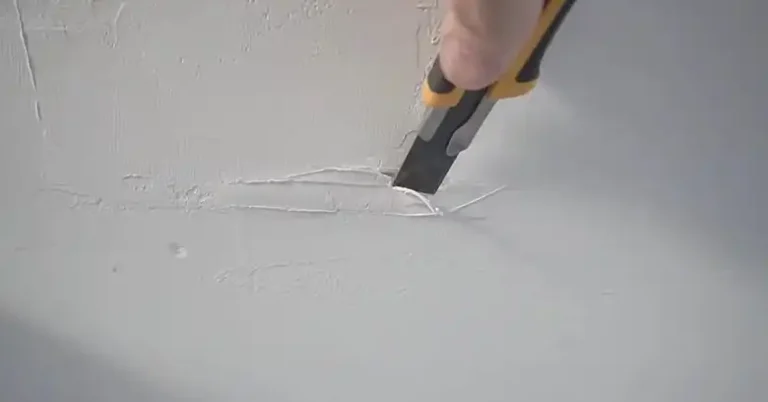Jack Stud vs King Stud | A Detailed Comparison
Wall framing is a fundamental aspect of construction, providing the backbone for load-bearing structures. Within these frames, headers are horizontal beams that span openings for doors and windows, transferring the weight of the structure above to the surrounding studs.
This is where jack studs and king studs come into play. These specialized framing elements work together to support headers and ensure the stability of the entire structure. By understanding their purposes and installation techniques, you can ensure a safe and durable building.
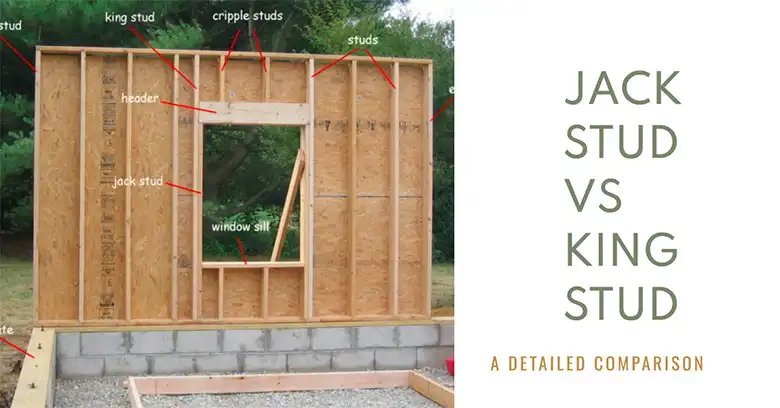
Jack Studs
A jack stud is a vertical framing member that provides support for the ends of a header. It is typically positioned on either side of an opening, such as a doorway or window. The primary function of jack studs is to transfer the load from the header to the bottom plate or foundation. They are essential in preventing sagging or deflection of the header over time.
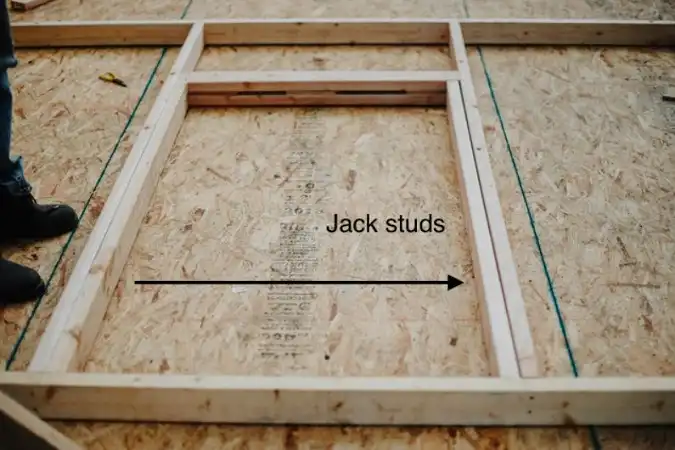
Jack studs are usually placed at a consistent spacing, typically 16 inches or 24 inches on center, depending on the local building codes and the load requirements. In some cases, jack studs can be doubled or tripled for added support, especially when supporting larger headers or in high-wind or seismic areas.
While jack studs are the most common method for supporting headers, there are alternatives available, such as steel header hangers. These hangers can be used in lieu of jack studs, particularly in situations where framing space is limited or when working with pre-fabricated wall panels.
It’s important to note that jack studs have specific structural requirements based on the size of the header and the load they will be supporting. Consult your local building codes or a structural engineer to determine the appropriate size and spacing of jack studs for your project.
King Studs
A king stud, also known as a trimmer stud, is a vertical framing member that runs continuously from the bottom plate to the top plate, adjacent to the jack studs and header. The main function of a king stud is to provide additional support for the header, particularly in wider openings or when the header is carrying a significant load. King studs also help to transfer the weight of the structure above the opening to the floor framing below.

Unlike jack studs, king studs do not always align with the standard stud spacing of 16 inches or 24 inches on center. Their placement is primarily determined by the width of the opening and the size of the header.
Similar to jack studs, king studs have specific structural requirements based on the load they will be supporting. They are typically larger in size than regular studs and may require additional nailing or fastening patterns to ensure proper load transfer.
Jack Studs vs King Studs: A Head-to-Head Comparison
To better understand the differences between jack studs and king studs, let’s compare their key features in a table:
| Feature | Jack Stud | King Stud |
| Function | Supports the ends of a header | Provides additional support for the header |
| Placement | On either side of an opening | Adjacent to the jack studs and header |
| Typical Size | Matches regular stud size (e.g., 2×4, 2×6) | Larger than regular studs (e.g., 2×6, 2×8) |
| Spacing | Consistent spacing (16″ or 24″ on center) | Determined by opening width and header size |
| Structural Requirements | Specific to header size and load | Specific to header size and load |
This table highlights the distinct roles and characteristics of jack studs and king studs, allowing you to make an informed decision when choosing the appropriate framing components for your project.
Choosing the Right Stud
When deciding between jack studs and king studs, several factors come into play:
- Header Size: The larger the header, the more support it will require. In such cases, king studs may be necessary to provide additional reinforcement.
- Opening Width: Wider openings, such as those found in commercial or industrial buildings, may necessitate the use of king studs to adequately support the longer header span.
- Load-Bearing Requirements: If the structure above the opening is carrying a significant load, such as a multi-story building or a heavy roof system, king studs may be required to ensure adequate load transfer.
- Building Codes and Regulations: Always consult your local building codes and regulations to determine the specific requirements for jack studs, king studs, and other framing components.
It’s important to note that in some situations, both jack studs and king studs may be required to provide the necessary support. For example, in a wide opening with a large header, you might have jack studs on either side of the opening, as well as king studs flanking the jack studs for added stability.
Common Stud Installation Mistakes to Avoid
To prevent potential issues and ensure a successful installation, be aware of these common mistakes:
- Incorrect Placement: Improperly positioning jack studs or king studs can compromise the structural integrity of the header and the entire framing system.
- Undersized Studs: Using studs that are too small or inadequate for the intended load can lead to sagging, deflection, or even failure over time.
- Improper Nailing Techniques: Failing to follow proper nailing or fastening patterns can result in insufficient load transfer and potential structural weakness.
- Neglecting Movement and Settlement: Failure to account for potential settling or movement of the structure can cause stress on the framing components and lead to cracks or other issues.
By being mindful of these common mistakes, you can help ensure a safe and durable installation of jack studs and king studs.
Conclusion
Jack studs and king studs are essential components in framing walls, doorways, and windows. While they serve distinct purposes, they work together to support headers and maintain the overall structural integrity of a building.
By understanding the differences between jack studs and king studs, as well as their proper installation techniques, you can ensure a safe and durable construction project. Remember to always follow local building codes, consult professionals when necessary, and prioritize safety throughout the process.
Frequently Asked Questions (FAQ)
Can jack studs be reused?
While it is possible to reuse jack studs in some cases, it is generally not recommended, especially if they have been subjected to significant loads or have visible damage. Reusing studs can compromise the structural integrity of the framing system. It’s best to use new, undamaged studs for each project to ensure maximum safety and durability.
What are cripple studs?
Cripple studs are short vertical framing members that are used to provide support between the top of a header and the top plate of a wall. They help transfer the load from the top plate to the header and are often used in combination with jack studs and king studs.
How do I determine the appropriate size for jack and king studs?
The appropriate size for jack and king studs is primarily determined by the load they will be supporting and the span of the header. Consult your local building codes or a structural engineer to determine the required stud size based on the specific project requirements, such as the height of the structure, the weight of the roof or floors above, and any additional loads or forces the studs may be subjected to.
Can jack and king studs be used in load-bearing walls?
Yes, jack and king studs are commonly used in load-bearing walls, as they play a crucial role in supporting the weight of the structure above. In fact, their proper installation and sizing are even more critical in load-bearing walls to ensure the overall structural integrity and safety of the building.

